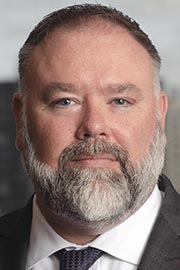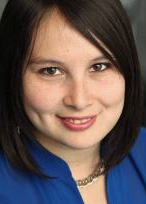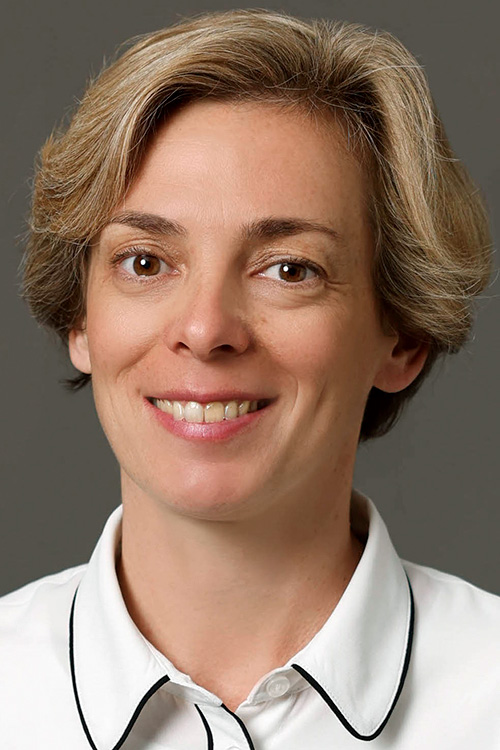

 Ali's invitation to post reflections on the past 25 years of ICANN is very welcome. No doubt, some will write about major shifts in how ICANN is governed, for example, the end of United States government oversight. While others will write about changes to the industry that ICANN has catalyzed, for example, the 2012 round of new gTLDs and the upcoming next application process. more
Ali's invitation to post reflections on the past 25 years of ICANN is very welcome. No doubt, some will write about major shifts in how ICANN is governed, for example, the end of United States government oversight. While others will write about changes to the industry that ICANN has catalyzed, for example, the 2012 round of new gTLDs and the upcoming next application process. more
 ICANN 53, in beautiful Buenos Aires, was the first time I experienced multi-stakeholder Internet governance Back then, I represented, as chair, the Latin American Forum of Telecommunications Regulators (REGULATEL), an observer org in GAC. I remember my amazement... more
ICANN 53, in beautiful Buenos Aires, was the first time I experienced multi-stakeholder Internet governance Back then, I represented, as chair, the Latin American Forum of Telecommunications Regulators (REGULATEL), an observer org in GAC. I remember my amazement... more
 This month marks the 25th anniversary of the formation of the Internet Corporation for Assigned Names and Numbers (ICANN). A quarter of a century ago, on September 30, 1998, ICANN was officially incorporated as a California non-profit corporation. To commemorate this landmark event, ICANN will be hosting celebrations during ICANN78 in Hamburg, Germany, 21-26 October. more
This month marks the 25th anniversary of the formation of the Internet Corporation for Assigned Names and Numbers (ICANN). A quarter of a century ago, on September 30, 1998, ICANN was officially incorporated as a California non-profit corporation. To commemorate this landmark event, ICANN will be hosting celebrations during ICANN78 in Hamburg, Germany, 21-26 October. more
 AT&T and Comcast recently joined forces and joined the 5G Open Innovation Lab. This is a venture that has been funding start-ups and others working in 5G research. Along with looking to improve 5G edge technology, a primary goal of the OAI Lab is to search for killer apps for 5G. The two big companies join the other founding members of the effort, which includes Dell, Intel, Microsoft, Deloitte, and Nokia. more
AT&T and Comcast recently joined forces and joined the 5G Open Innovation Lab. This is a venture that has been funding start-ups and others working in 5G research. Along with looking to improve 5G edge technology, a primary goal of the OAI Lab is to search for killer apps for 5G. The two big companies join the other founding members of the effort, which includes Dell, Intel, Microsoft, Deloitte, and Nokia. more
 Over the past year, discussions around artificial intelligence (AI) have saturated media and policy environments. Perspectives on it vary widely: from boosterist narratives, which posit the limitless potential of AI-powered technologies to help overcome social inequalities and accelerate industrial development, to apocalyptic framings, which suggest that a (speculative) 'artificial general intelligence' could make humans extinct. more
Over the past year, discussions around artificial intelligence (AI) have saturated media and policy environments. Perspectives on it vary widely: from boosterist narratives, which posit the limitless potential of AI-powered technologies to help overcome social inequalities and accelerate industrial development, to apocalyptic framings, which suggest that a (speculative) 'artificial general intelligence' could make humans extinct. more
 Several weeks ago, the Federal Communications Commission (FCC) embarked on one of the most far-reaching regulatory gambits in its 90-year history. It is formally known as a Notice of Proposed Rulemaking in the matter of Cybersecurity Labeling for Internet of Things, Docket 23 -- 239. The FCC offers ICT product developers the use of its FCC trademarked cyber trust mark placed on their products in exchange for accepting open-ended Commission cybersecurity jurisdiction... more
Several weeks ago, the Federal Communications Commission (FCC) embarked on one of the most far-reaching regulatory gambits in its 90-year history. It is formally known as a Notice of Proposed Rulemaking in the matter of Cybersecurity Labeling for Internet of Things, Docket 23 -- 239. The FCC offers ICT product developers the use of its FCC trademarked cyber trust mark placed on their products in exchange for accepting open-ended Commission cybersecurity jurisdiction... more
 The first things that usually come to mind when talking about software development risks are bugs and security issues that have not been detected or those that have been discovered but left unaddressed. Some may also point out poor code quality reviews and the use of third-party components and dependencies laced with malicious code. more
The first things that usually come to mind when talking about software development risks are bugs and security issues that have not been detected or those that have been discovered but left unaddressed. Some may also point out poor code quality reviews and the use of third-party components and dependencies laced with malicious code. more
 Phishing attacks have been rising over the past couple of years. Reports show that there was a 345 percent increase in phishing attacks between 2020 and 2021. In 2022, the number of advanced phishing attacks rose by 356 percent. Behind these alarming numbers, however, is an even uglier picture of digital fraud: a difficult-to-quantify prevalence of fake or spoof websites. more
Phishing attacks have been rising over the past couple of years. Reports show that there was a 345 percent increase in phishing attacks between 2020 and 2021. In 2022, the number of advanced phishing attacks rose by 356 percent. Behind these alarming numbers, however, is an even uglier picture of digital fraud: a difficult-to-quantify prevalence of fake or spoof websites. more
 In 2017, Telesat, an established Canadian geostationary satellite operator, announced a planned low-Earth orbit Internet service constellation. The plan called for 117 satellites with inter-satellite laser links in a mix of inclined and polar orbits, enabling global coverage. more
In 2017, Telesat, an established Canadian geostationary satellite operator, announced a planned low-Earth orbit Internet service constellation. The plan called for 117 satellites with inter-satellite laser links in a mix of inclined and polar orbits, enabling global coverage. more
 In a rapidly evolving digital landscape, the value of IP addresses has surged to the forefront of discussions. Over a month ago, Amazon Web Services (AWS) made a pivotal announcement, reshaping the IP address pricing landscape. Citing the escalating costs of acquiring IP addresses on secondary markets, AWS declared a fundamental shift in its pricing strategy, set to take effect on February 1, 2024. more
In a rapidly evolving digital landscape, the value of IP addresses has surged to the forefront of discussions. Over a month ago, Amazon Web Services (AWS) made a pivotal announcement, reshaping the IP address pricing landscape. Citing the escalating costs of acquiring IP addresses on secondary markets, AWS declared a fundamental shift in its pricing strategy, set to take effect on February 1, 2024. more
 Yesterday -- in a unanimous decision of the US Federal Court of Appeals for the DC Circuit (CADC) in ASTM v. Public.Resource.Org --- some of the worst standards paywalls came tumbling down. The court definitively determined that where governmental authorities incorporate private organisation technical standards into law by reference, non-commercial dissemination of those standards "constitutes fair use and cannot support liability for copyright infringement." more
Yesterday -- in a unanimous decision of the US Federal Court of Appeals for the DC Circuit (CADC) in ASTM v. Public.Resource.Org --- some of the worst standards paywalls came tumbling down. The court definitively determined that where governmental authorities incorporate private organisation technical standards into law by reference, non-commercial dissemination of those standards "constitutes fair use and cannot support liability for copyright infringement." more
 A few years ago, there were a lot of predictions that we'd see broadband networks converting to quantum technology because of the enhanced security. As happens with many new technologies, quantum computing is advancing at a slower pace than the wild predictions that accompanied the launch of the new technology. more
A few years ago, there were a lot of predictions that we'd see broadband networks converting to quantum technology because of the enhanced security. As happens with many new technologies, quantum computing is advancing at a slower pace than the wild predictions that accompanied the launch of the new technology. more
 The canonical specification of the DNS that is normally cited are the pair of quite venerable RFCs, RFC 1034, "Domain names - concepts and facilities", and RFC 1035, "Domain names - implementation and specification", both published in November 1987. However, these two specification documents are just the tip of a rather large iceberg. One compendium of all the RFCs that touch upon the DNS lists some 292 RFCs. more
The canonical specification of the DNS that is normally cited are the pair of quite venerable RFCs, RFC 1034, "Domain names - concepts and facilities", and RFC 1035, "Domain names - implementation and specification", both published in November 1987. However, these two specification documents are just the tip of a rather large iceberg. One compendium of all the RFCs that touch upon the DNS lists some 292 RFCs. more
 The Uptime Institute (UI) is an IT industry research firm best known for certifying that data centers meet industry standards. UI issues an annual report that analyzes the cause of data center outages. The causes for data center outages are relevant to the broadband industry because the same kinds of issues shut down switching hubs and Network Operations Centers. more
The Uptime Institute (UI) is an IT industry research firm best known for certifying that data centers meet industry standards. UI issues an annual report that analyzes the cause of data center outages. The causes for data center outages are relevant to the broadband industry because the same kinds of issues shut down switching hubs and Network Operations Centers. more
 Project Liberty's Institute sat down with Wendy Seltzer, an advisor to the Decentralized Social Networking Protocol (DSNP). Wendy was counsel to the World Wide Web Consortium (W3C), and has served on the boards of The Tor Project, Open Source Hardware Association and ICANN. more
Project Liberty's Institute sat down with Wendy Seltzer, an advisor to the Decentralized Social Networking Protocol (DSNP). Wendy was counsel to the World Wide Web Consortium (W3C), and has served on the boards of The Tor Project, Open Source Hardware Association and ICANN. more
Sponsored byWhoisXML API

Sponsored byIPv4.Global

Sponsored byVerisign

Sponsored byRadix

Sponsored byCSC

Sponsored byVerisign

Sponsored byDNIB.com
